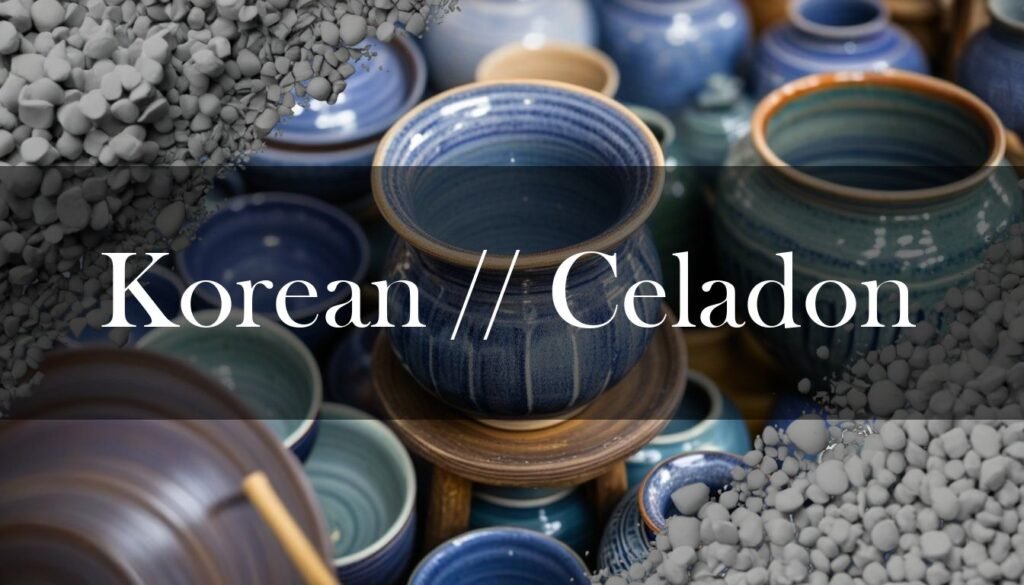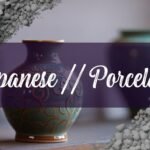Korean celadon, especially from the Goryeo Dynasty (918–1392 CE), stands as a remarkable achievement in ceramic art, celebrated for its unique jade-green glaze and elegant forms. The creation of these exquisite pieces was a meticulous process, blending art, science, and a deep connection to nature.
The hallmark of Korean celadon is undoubtedly its translucent jade-green glaze, a color achieved through a precise combination of materials and firing techniques. Iron in the clay, along with iron oxide, manganese oxide, and quartz particles in the glaze, all contribute to this distinctive hue. What truly sets Korean celadon apart is the firing process. Kilns were built on hillsides with multiple chambers to ensure efficient heat distribution, and the firing occurred in a low-oxygen, reducing atmosphere at around 1150°C. This method gives the glaze a cooler, blue-green tone, distinguishing it from the warmer, olive-green shades of Chinese celadons. More information about this can be found at the Metropolitan Museum of Art.
The forms of Korean celadon vessels are as graceful as their glaze is beautiful. Among the most iconic is the maebyeong, a tall vase with a narrow base, curved shoulder, and small mouth, epitomizing Korean celadon aesthetics. Melon-shaped ewers, pitchers with lobed bodies resembling melons, are another common and delightful form, often decorated with carved designs. Incense burners, elaborate vessels with openwork designs, allowed the fragrant smoke to escape through intricate patterns, adding a sensory dimension to their artistic appeal. You can read more about it on World History Encyclopedia.
“*The shapes and forms of Korean Celadon are as important as the glazing and firing techniques used*.”
Korean celadon is also distinguished by its decorative techniques. The sanggam, or inlay technique, introduced in the mid-12th century, involves carving designs into the clay and filling them with white or black slip before glazing. This results in intricate patterns that appear almost like brush strokes beneath the translucent glaze. Artisans also incised and carved motifs directly onto the clay, creating subtle linear patterns that became more pronounced as the glaze pooled in the grooves. Some vessels even featured openwork, or piercing, adding a delicate, lace-like quality to the pottery. These decorative motifs often draw inspiration from nature and Buddhist symbolism, with floral patterns like lotus, peony, and chrysanthemum, animal motifs such as cranes and parrots, and designs featuring clouds and other Buddhist iconography. You can find additional information on SmartHistory. You can also read about Korean Celadon: A Jade Green Legacy here.
- Floral Patterns
- Animal Motifs
- Buddhist Iconography
The three main categories of decorative motifs often seen on Korean Celadon pottery.
Today, authentic examples of Korean celadon can be found in several prestigious museums and cultural centers, both in Korea and internationally. The National Museum of Korea in Seoul houses an extensive collection, including national treasures, with a dedicated gallery showcasing the jade hues of Goryeo celadon. The Haegang Ceramics Museum in Icheon, established by master ceramist Yu Geun-Hyeong, is another key institution dedicated to researching and exhibiting Korean ceramics, including celadon ware. Internationally, the Koryo Museum of Art in Kyoto, Japan, is dedicated exclusively to Korean art and includes a significant collection of Goryeo celadons. The Freer Gallery of Art in Washington, D.C., also features Korean celadon ceramics in its exhibitions, highlighting the rediscovery and appreciation of this art form. You can also read about Unlock the Secrets of Celadon Glazes here.
“*Celadon is more than just pottery; it’s a window into Korean history and artistry*.”Yu Geun-Hyeong
The legacy of Korean celadon extends beyond its aesthetic beauty; it represents a pinnacle of artistic achievement during the Goryeo Dynasty, reflecting the era’s aesthetic values and the integral role of ceramics in Korean history. The techniques and styles developed during this period have continued to influence Korean ceramics, making celadon a lasting symbol of Korean artistic excellence. You can learn more at the Yonhap News Agency.





